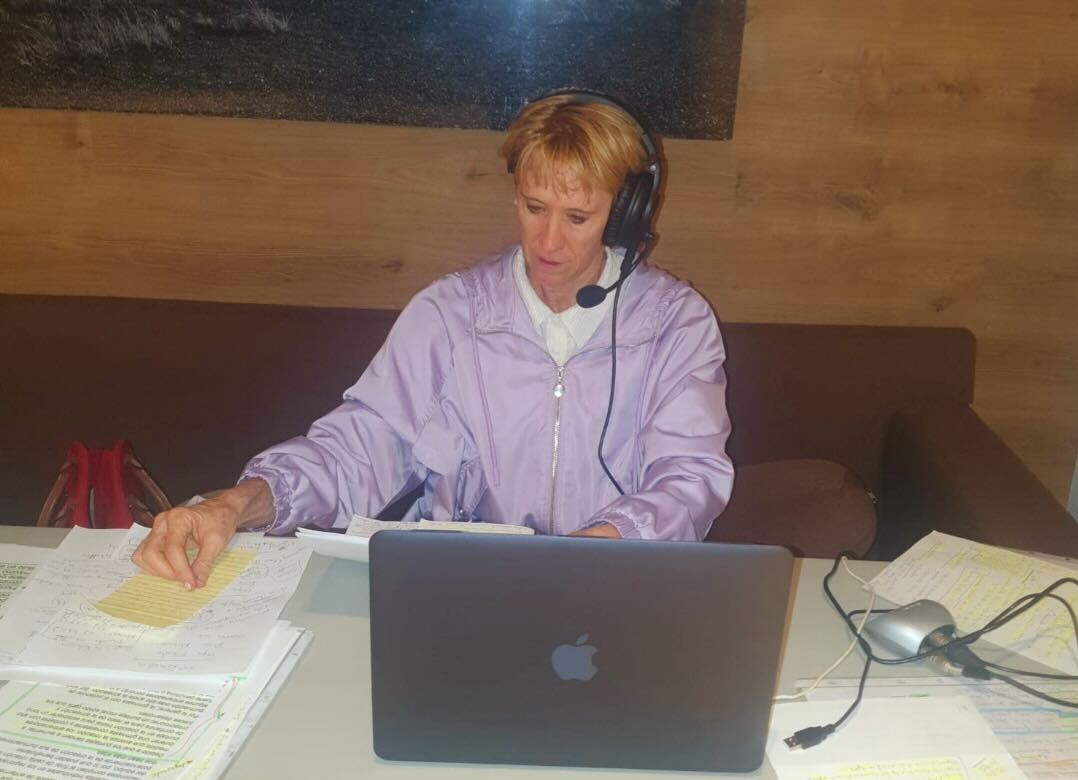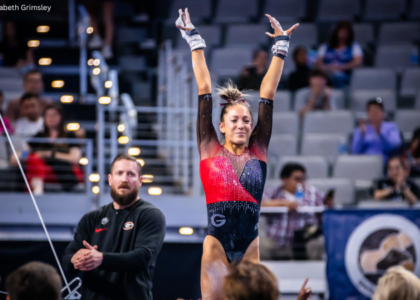Estela de la Torre became the first (and to date, only) Mexican gymnast to make an Olympic all-around final when she competed in the 1980 Moscow Games. She finished 29th, her top result at those Games.
Seven years later, after an athletic pivot to diving that took her to the Pan American Games and the world championships, she was asked if she could cover the gymnastics world championships in Rotterdam. In 1988, she became the only woman on the Mexican team covering gymnastics for the Olympics in Seoul.
Now Estela de la Torre Borja, she went on to cover gymnastics at six more Olympic Games for two different Mexican television stations. In 2018, ESPN came calling, seeking Spanish-language coverage for NCAA gymnastics, which was rapidly gaining in popularity. De la Torre Borja was a contemporary of beloved ESPN gymnastics commentators Bart Conner and Kathy Johnson Clarke when she was competing and had the United States not boycotted the Moscow Games, all three would have competed there. De la Torre Borja became friendly with Conner and Johnson Clarke as they pursued careers in the television industry. She studied their NCAA commentary to learn the ropes at ESPN, she said, first muting their commentary, working on her own, then comparing her work to theirs.
De la Torre Borja studied graphic design in school and said she never intended to become a sportscaster, despite years spent competing as an elite athlete. “It was a great surprise,” she said of her lengthy career in broadcasting.

Images provided by de la Torre Borja
She still watches elite gymnastics, she said, praising in particular Simone Biles on floor and vault — “she flies” — as well as Belgium’s Nina Derwael and Algeria’s Kaylia Nemour on bars. Alexa Moreno, Mexico’s top gymnast, is also a favorite. “I’ve been covering a lot of her career,” de la Torre Borja said of Moreno, whom she last saw compete at the 2023 world championships in Antwerp. “It’s very good that she is still here. Mexico is working very, very hard. It’s helping a lot for our country, you know, to improve the level of the new generations and to inspire the new kids and the new era for gymnastics in Mexico.”
In NCAA, she said, she enjoyed watching Florida’s Trinity Thomas. “I love her power,” de la Torre Borja said. ” I love her routines. All the time, she’s focused, and all the time she’s great, amazing, she inspires all of [her] team.” She looks forward to Thomas’ return to elite this year, beginning with Winter Cup from February 23-25. “I don’t know how she does it. I don’t know how she keeps competing this long. It’s hard because the team is only five girls. And to be five from all of these almost 40 girls from the USA [national team] camp. It’s very, very hard.”
She especially enjoys beam and floor exercise because of the artistry. Maybe this is also because as a gymnast, de la Torre Borja shone on floor. Her Olympic floor music in 1980 was Mexican, a point of pride for her. “It was very special to compete in Russia with Mexican music,” she said. Her favorite floor skill was a double-twisting layout; she dismounted beam with this same skill.
She hopes more Mexican athletes will try to compete for NCAA programs in the future, and wants her commentary to help spread information and knowledge about opportunities at the college level. Currently, de la Torre Borja keeps an eye on Frida Esparza, a senior at UCLA and a two-time world championships competitor for Mexico in 2018 and 2019, as well as Anapaula Guiterrez, a Stanford junior who competed for the Mexican national team from 2016-19.
While she has only covered the NCAA postseason prior to this year, providing Spanish-language commentary for regionals, semifinals, and finals, de la Torre Borja hopes to bring her commentary to more regular-season meets over time. She will cover at least 12 meets during the regular season in 2024.
She credits passion for the sport as the key to her success, both as an athlete and a broadcaster. “My work is not work because I love it,” she said. “I’m doing what I love, and I’m showing people around the world that you have to do what you love in your life.”
That passion for gymnastics, she said, is something that she sees in NCAA gymnasts, particularly in the bonds among teammates — something that she noted also differentiates the sport from the elite gymnastics of which she is a veteran.
“I love the union, the power of the team, because stronger teams make them feel security. It doesn’t matter what they do or what they don’t do. The most important part of this beautiful sport is to enjoy the sport.”
READ THIS NEXT: The Best International NCAA Gymnasts of All Time
Article by Lela Moore





One comment